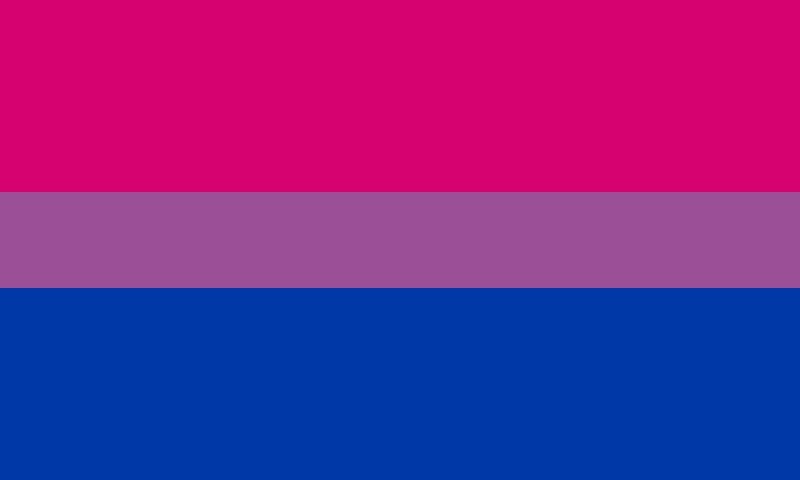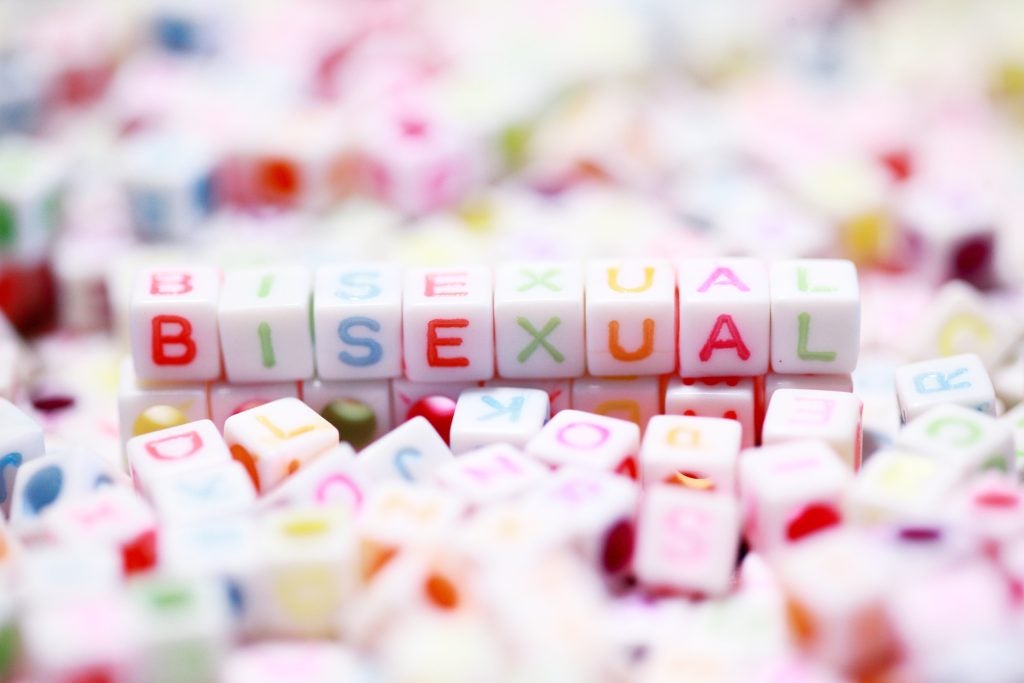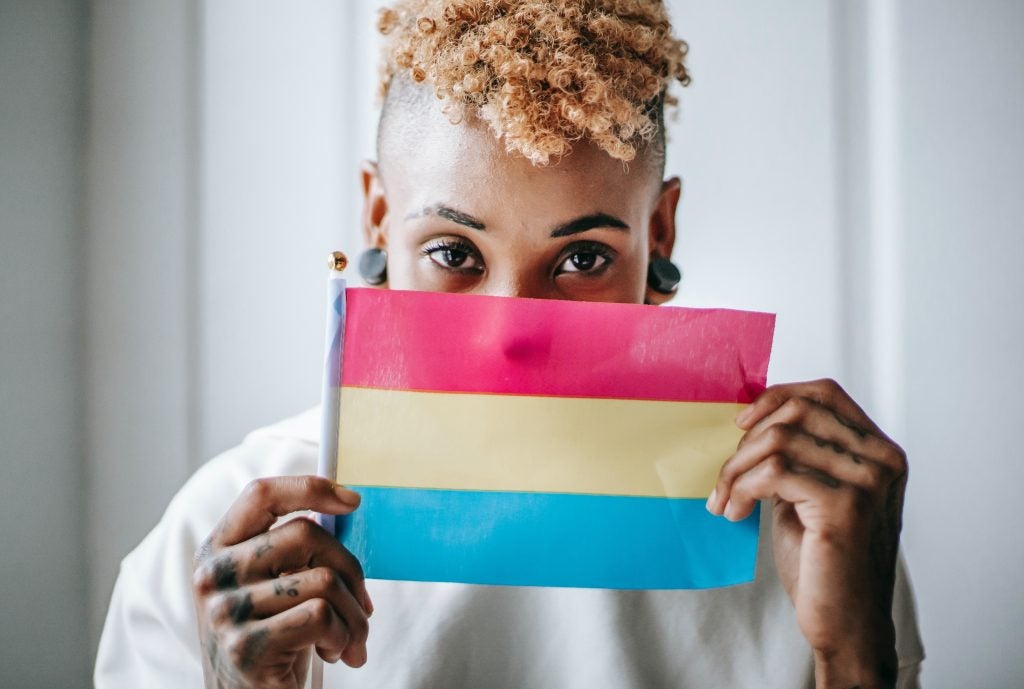
Table of Contents
What is Bisexuality?
Historically bisexuality has been defined as a category of sexual orientation distinct from homosexuality and heterosexuality, due to the experience of romantic and sexual attraction to both males and females. However, because of a growing awareness of the binary (the idea that there are only two genders) this definition is increasingly criticized for its distinction of men and women being the only two possible genders a bisexual person can be attracted to.
The term “bisexual” has evolved to encompass a more diverse and inclusive range of gender identities. Thus, the “bi” in bisexual has moved from meaning the attraction to “both” genders, to meaning the ability to be attracted to more than one. Because of this more broadened definition, “bisexual” has since become a term under which several identities can group together, but are not necessarily confined to.
The acknowledgement that there are more than two genders is a crucial part of how the understanding of sexuality is growing and changing. Some people feel that the term “bisexuality” does not accurately represent their own sexual orientation, because of its definition within the binary. For this reason, terms such as pansexual, demisexual, and several others have been created to better represent each individuals unique identity and experience.
The Individual
People who identify as bisexual all experience their sexual orientation differently. They may not necessarily experience equal attraction for each gender simultaneously; some may describe themselves as mostly heterosexual, mostly homosexual, or equally attracted to both sexes or genders.2 These differences within bisexuality may be called “leanings,” indicating preferences or tendencies within the bisexual orientation. Some may choose not to define the specifics of their orientation, and fluctuate in the levels of sexual, emotional, or romantic attraction they feel towards certain sexes or genders.
Some people use the Kinsey Scale to simplify the broad range of sexuality that exists in humans. Alfred Kinsey, the famous sexologist of the mid-twentieth century, viewed sexuality as a scale ranging from zero (exclusively heterosexual) to six (exclusively homosexual), with bisexuality falling at about 3 and variances of it represented as 2 and 4.3 This theory of sexuality has been openly challenged, resulting in the production of other scales like the Klein Sexual Orientation Grid (KSOG).
The KSOG is a more detailed system of helping describe a person’s sexual orientation using variables such as sexual attraction, sexual behavior, fantasies, emotional preference, social preference, heterosexual/homosexual lifestyle, and self identification. While this grid is more complicated than the Kinsey Scale, it better captures the complexities of human sexuality. Scales such as these are often a means for people to better understand themselves, but should not be used as a way to definitively identify one’s orientation.
The B in LGBTQ+

Bisexual, alongside lesbian, gay, trans, pansexual, asexual, and intersex, falls under the group of identities known as “queer.” In the past, the term “queer” was used as an insult toward someone who was assumed to have an identity other than heterosexual. Today, “queer” has been reclaimed by the LGBTQ+ (Lesbian, Gay, Bisexual, Trans, Queer or Questioning, Intersex, Asexual) community as a general term for people who identify as LGBTQ+.
Due to misconceptions about bisexuality, some bisexual people have felt unwelcome within LGBTQ+ circles. In 1977, it was suggested that Western culture had imposed a ‘straight jacket’ on bisexuality, due to the rejection of both heterosexuals and homosexuals.5 Biphobia, similar to homophobia, is the prejudice that occurs when bisexual people are rejected or mistreated on the basis of their sexual orientation. This intolerance is an unfortunate reality that many bisexual people face, and have faced for years.6 Bisexual identity may be judged even by those in the queer community, who argue that bisexuals need to “choose a side,” or are “going through a phase”. This denial of bisexual identity is hurtful, and contributes to a hostile environment within the LGBTQ+ community. Luckily, some parts of the LGBTQ+ community are very accepting of bisexual people. It is important to recognize that bisexuality is a valid sexual orientation, and even more so, there should be no pressure to conform to any labeled sexuality.
Bisexuality vs. Pansexuality

The terms “bisexual” and “pansexual” are often confused with each other. Pansexuality (from the affix “pan,” meaning “all”) is the attraction to all kinds of people, regardless of their gender presentation. People who identify as pansexual may also consider themselves gender-blind because gender and sex do not play a role in their attraction. Bisexuality can be understood as the ability to be attracted to more than one sex or gender, but not necessarily all. Although these two concepts seem very similar, it is important to use the correct term when referring to someone who identifies as either of the two terms, out of respect for that person’s identity.
Bisexual vs. Bicurious
Someone who identifies as bicurious is someone who is interested in having romantic or sexual experiences with both partners of the same gender and different gender, without necessarily labeling their sexual orientation. Bicuriousity may be understood as an exploration of sexuality through experience to better understand one’s personal preferences. With that being said, being bicurious does not necessarily mean acting on this curiosity. Bicuriousity should not be viewed as the same thing as bisexuality, nor as a direct stepping stone to bisexuality. Someone who has identified themselves as bisexual has recognized and identified their preferences and should not be seen as “experimenting”. Someone who has identified themselves as bicurious is exploring their possibilities, and has yet to decide if they will redefine their sexual orientation.
Bisexual Relationships
Relationship styles come in a wide variety, and bisexual relationship are no exception. The capability of liking more than one gender does not mean that bisexual people want to be in a relationship with several people simultaneously. People who identify as bisexual may choose to be in monogamous relationships with only one partner, or they may choose to have several partners. There is no “correct” relationship format. People within any sexual orientation have the freedom to choose whatever form of romantic or sexual relationship feels right for them. Consent and mutual respect are the only things that should be consistent across all relationships, regardless of their sexual orientation.
Misconceptions
There are a number of misconceptions regarding bisexual people that contribute to harmful or negative stereotypes.7 The following are some of the misconceptions about bisexual people, with explanations of why these misconceptions are false.
Bisexuals are promiscuous
Bisexual people are no more promiscuous than any other group of people. Bisexual individuals are capable of being in a devoted monogamous relationship if that is what they choose. The possibility of being attracted to more than one gender does not make someone more likely to act on their desires.
Bisexuals are attracted to all people, all the time
A bisexual person’s potential to be attracted to more than one gender does not cause them to be attracted to everyone from every sex or gender. Bisexual people have preferences when it comes to choosing a partner, just like anyone else.
Bisexual people need to “pick a side”
Bisexual people are not going to “pick a side”; they are not “half-gay, half-straight”. Their sexual orientation is a valid identity, not a stepping stone to another identity.
Bisexuals are going through a phase
While sexuality can change and evolve over time, one’s sexual orientation should always be respected as a part of their identity, and should not be seen as a phase that will eventually pass. Sexuality is complex and a person should be allowed to identify themselves without imposing assumptions.
If a person is in a heterosexual relationship, they are straight; if they are in a homosexual relationship, they are gay.
One cannot presume someone’s sexual orientation just by looking at their partner’s gender identity or sexual orientation. A person’s current partner does not define their sexual orientation.
A bisexual person is “experimenting”
“Experimenting” implies that someone is unsure of their sexuality. If someone identifies as bisexual, then they know that they are attracted to people of more than one gender.
Bisexuals are “doing it for attention”
Most people find it demeaning for their relationships to be fetishized by others. Bisexual people, like most people, feel uncomfortable when they receive unwanted attention from others. This misconception is often used to describe female-identifying bisexuals.
Coming Out as Bisexual

“Coming out” is the colloquial term for personally accepting one’s identity in the LGBTQ+ community and revealing one’s sexual orientation to others. The process of coming out, although sometimes scary, is an important step and should be celebrated. Being open and proud of your sexuality may take time, but will hopefully lead to a more confident and fulfilling life.
Members of the bisexual community face very similar struggles to other LGBTQ+ members when coming out to people in their lives who may not be well educated or open-minded about sexual orientations that are unfamiliar to them. This experience will be different for everyone, and is highly dependent on the audience and cultural context. Although the fear of rejection from friends and family members may be scary, there are many benefits to coming out, including a feeling of relief, the ability to date openly, and the benefits of having a support network that you can trust. With that being said, there are communities in the world where being identified as anything other than heterosexual can put one’s life in danger. It is up to each individual to weigh the costs and benefits of coming out in their society before deciding what to do. Ultimately, coming out is an individual decision and should be done if and when that person is ready.
Supporting the Bisexual Community
Being a supportive ally to the bisexual community means recognizing and supporting the existence of bisexuality. Bisexuals face many of the same forms of discrimination as other LGBTQ+ members, as well as their own unique hardships. One can be bi-inclusive by accepting bisexuality as a legitimate sexual orientation, actively disproving misconceptions, educating their community, and advocating for fair treatment and equal rights for all people.6 Making an effort to show bisexual people and other LGBTQ+ people that they are heard and respected is a great starting point in showing allyship.
Concluding Remarks
Bisexuality can be understood as the ability to be sexually, romantically, or emotionally attracted to two or more genders. The term is used to help people identify their sexual orientation to themselves and others, but does not strictly define them or put them in a box. While misconceptions about bisexuality still remain, it is a valid sexual orientation and the term is still used to help people identify their sexual preferences and it is important not to make assumptions about people’s preferences.
If you have any further questions about bisexuality, feel free to contact us here.
References
- Ochs, Robyn. “The Definition of Bisexuality (According to Bi Organizations, Activists, and the Community) – Tumblr Mobile Edition.” Robyn Ochs, 11 Oct. 2015, https://robynochs.com/2015/10/11/the-definition-of-bisexuality-according-to-bi/.
- Sprott, Richard A., and Bren Benoit Hadcock. “Bisexuality, Pansexuality, Queer Identity, and Kink Identity.” Sexual & Relationship Therapy, vol. 33, no. 1/2, Feb. 2018, pp. 214–232.
- “Kinsey Sexuality Rating Scale.” The Kinsey Institute. Indiana University, 2016. Web. 04 Feb. 2016.
- “The Klein Grid.” AIB, 2014. http://www.americaninstituteofbisexuality.org/thekleingrid.
- Taylor, Julia. “Out of the Darkness and into the Shadows: The Evolution of Contemporary Bisexuality.” Canadian Journal of Human Sexuality, vol. 27, no. 2, Aug. 2018, pp. 103–109
- “Bisexuality 101” LGBT Resource Center. University of Southern California, 2019. Web. 10 October. 2019.
- “Questions & Answers.” Bisexual.org. American Institute of Bisexuality, 2013. Web. 12 October. 2019.
Last Updated: 3 December 2019
